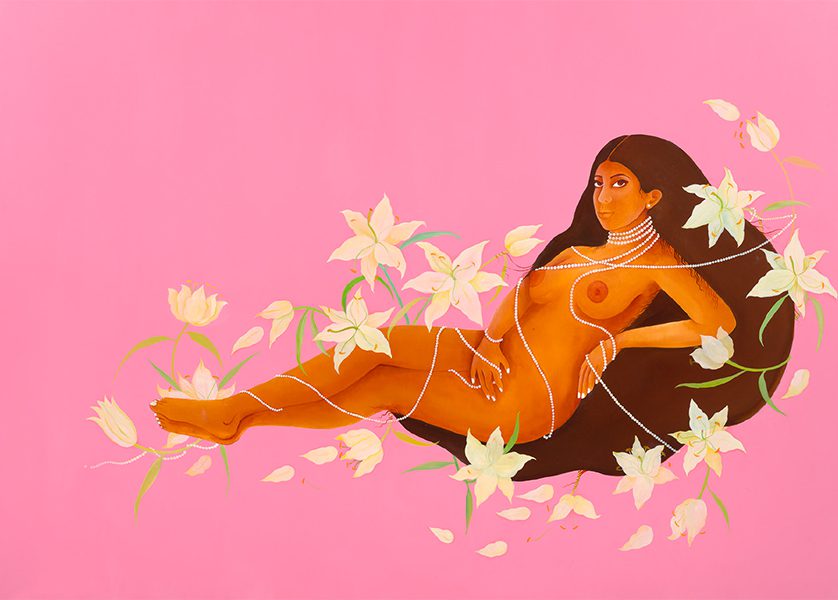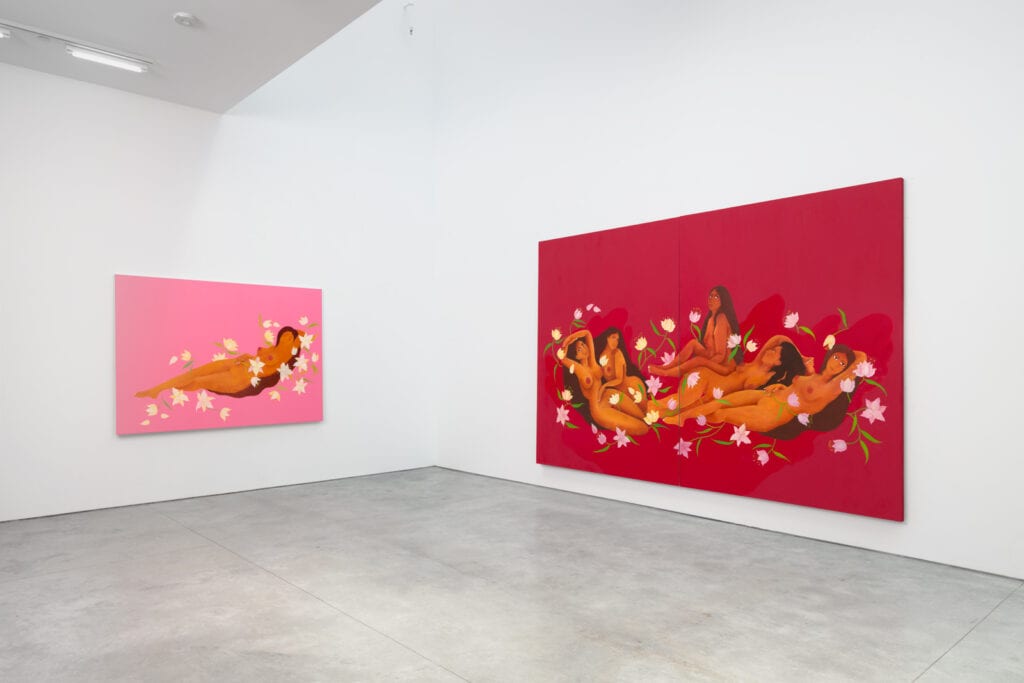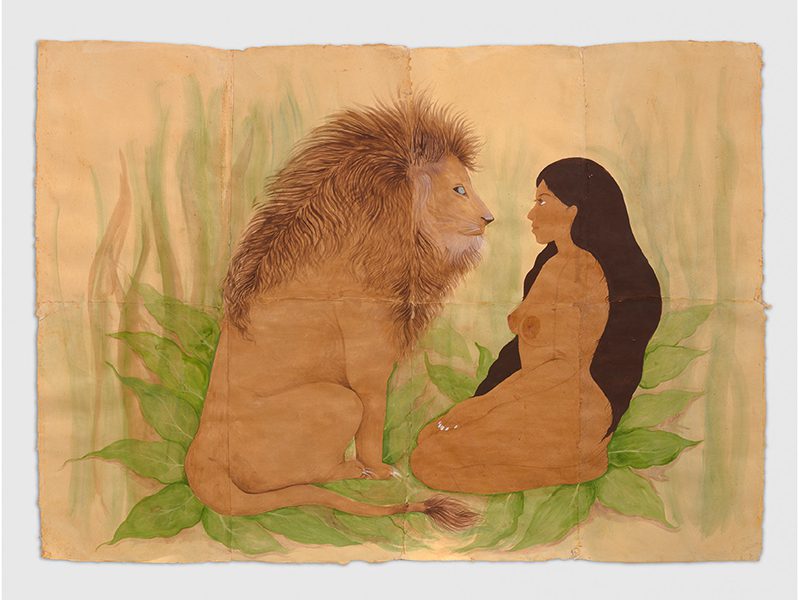Schahbaz’s large-scale paintings, on view in her latest exhibition Dreaming, assert the right to claim and occupy space as a woman.

Women of color, especially immigrants — artists or otherwise — are often forced to grow smaller, to fold themselves into becoming almost invisible, to avoid attention and be grateful to be allowed a place to stand. Hiba Schahbaz’s large-scale paintings, on view in her latest show, Dreaming, are therefore a bold assertion of the right to claim and occupy space, both figuratively and literally.
Schahbaz, born in Karachi, trained in Indo-Persian miniature painting at Lahore’s National College of Arts, and later studied at New York’s Pratt Institute. Dreaming showcases her life-size oil paintings of women, a pivot from her smaller, water-based works on paper, of which one is also on view. Figures are shown communing with nature and with other women, and tending to themselves.


As her artwork grows in scale, Schahbaz transposes depictions of nature from the miniature style to her large canvases: lotuses, lions, snakes, pearls, leaves, and doves surround the women, almost like a cocoon. The meditative gaze of miniature paintings makes itself evident here in the delicate tendrils of hair curling around lotus stems, or strings of pearls clinging to immaculately-drawn toes.
The women in the artworks, drawn in Schahbaz’s likeness, are self-portraits as well as symbols of the community of women the artist surrounds herself with. Be it “Dreamers” (2020) in which five women (or five images of one woman) with flowing dark hair sit unclothed in various stages of recline, or “Strength” (2020) — in which the same figure sits on her knees, facing a lion — the works convey a desire to commune and connect. Paintings of solitary women wrapped in the comfort of flowers and pearls, as in “Self Portrait As Sleeping Venus” or “Self Portrait as Olympia” (both 2020) emphasize the need to devote attention to oneself.
In Schahbaz’s work, femininity and delicateness are political. Her gaze, and that of her figures, is both persistent and disruptive.
SOURCE: hyperallergic by Bedatri D. Choudhury”

